


In this day and age, we can do many things digitally and online — from shopping to getting an education. Modern learning management systems (LMSs) emerged as popular tools in the world of online learning and training due to their automation, resource centralization, and 24/7 availability.
How to navigate the world of LMSs, generate your own idea, go through several steps of development, and finally create your own LMS? This is precisely what we’ll cover in this article. We’ll also check out the existing types of LMS, take a look at possible challenges, and break down the costs of development that you can expect in 2025. Enjoy the read!
%20(1).avif)
The year is 2025, and the state of LMSs is better than ever. The market is booming with its expected value projected to reach $29.9 billion in 2025, according to Hurix. It’s a $13 billion growth since 2022. And available technologies offer the things that previous generations could only dream about, which fuels this growth.
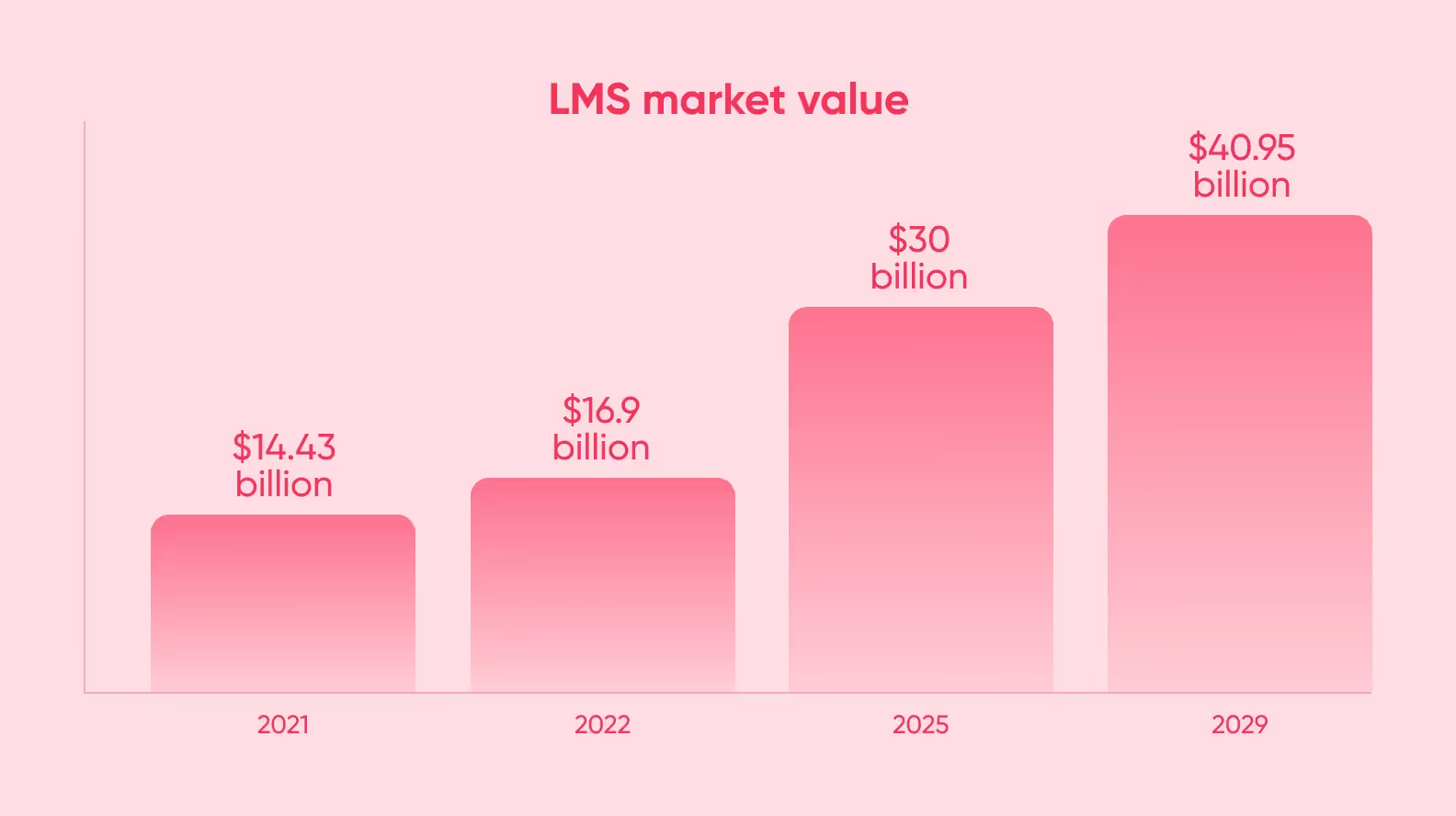
Organizations from different niches purchase these services for their purposes. These are typically educational institutions, government organizations, corporate training departments, healthcare companies, and nonprofits. In the majority of cases, the purpose is employee training and online learning.
LMSs act as centralized educational platforms, offering effective ways to deliver learning materials. Their flexibility and progress tracking features prove to be a functional way to standardize training across an organization, while also offering scalability and integration with existing systems.
Everything starts with an idea. And if you want to have your own learning management system, you need to know its purposes, features it will have, as well as the aims it will achieve. Below, we’ll cover the things that will help generate the idea of your system before you start LMS development.
The market is full of options, so if you want your project to be competitive, you have to research existing options and find out what you can offer. But firstly, you need to understand the audience you’re after. Think of the needs that your course can potentially cover and think of the people that will be interested in such a program.
Now that you’ve identified the target audience and their expectations, it’s time to think about what you can offer to fulfill these needs. Choosing the features that your system will provide goes hand in hand with selecting the technologies that you will use to develop the app.
You’ll have to decide whether your learning management system development will include designing the LMS from scratch, or if you’ll use existing offerings. If you opt for the latter, then you need to choose between open-source solutions and commercial proprietary options. There are different frameworks used for the backend and frontend, and you should also achieve the perfect interaction between them.
User experience can make or break customer engagement and satisfaction, so this isn’t something to ignore during learning management system development. In the world of LMSs, good UX means having interactivity, intuitive design, and extensive personalization capabilities such as customizability and catering to user’s preferences.
<div class="post_divider"></div>
⭐Our experience. Sometimes, the redesign is needed

We once redesigned a dating app Trueflutter for our customer, who wanted to refresh and polish the looks of the app as well as to make a killer feature, a voice note, more noticeable. We updated the color palette and fonts and redesigned the homepage. In the end, the owners decided to continue using the older UI/UX, but still kept some of our ideas, such as the structure of the homepage.
<div class="post_divider"></div>
Learning management systems come in different shapes and sizes. Let’s take a brief look at the common ones.
The cloud-based learning management systems are scalable and available nearly anywhere, as long as there is an Internet connection. Which, in turn, can become a drawback on its own, since offline modes aren’t always present. The online nature of the LMS also means that you can run it without installing any hardware or software
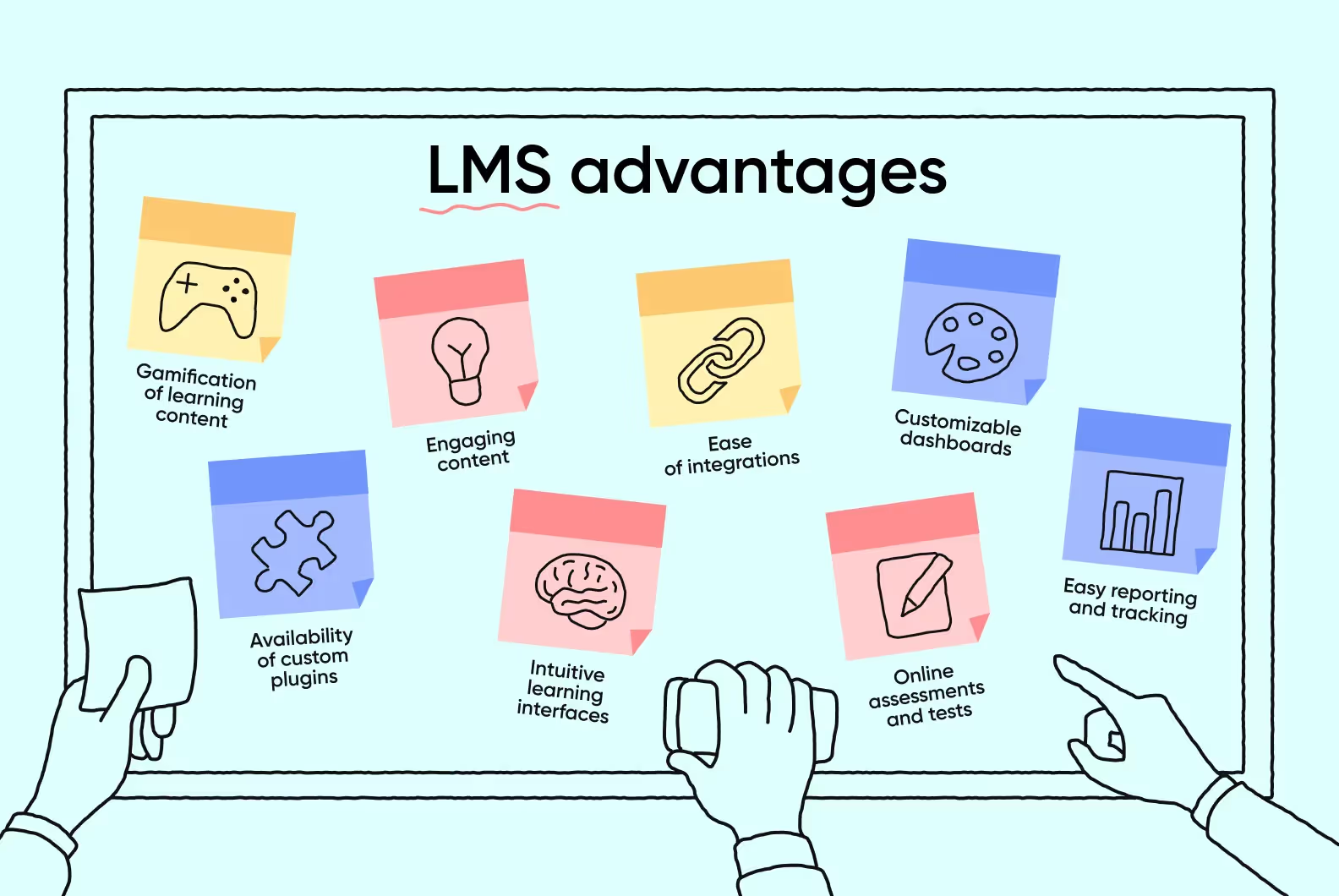
Also called the on-premise LMS, this type differs from the cloud-based ones. Here, the owner, such as an academic organization, installs the system and hosts it on its own servers.
The solution isn’t as popular as the cloud-based ones, but it has its benefits. For example, it gives an owner a deeper level of control over the system. Moreover, it’s more secure, since there are fewer chances of hacking and fewer vulnerabilities due to the system being air-gapped, although that depends on the implementation.
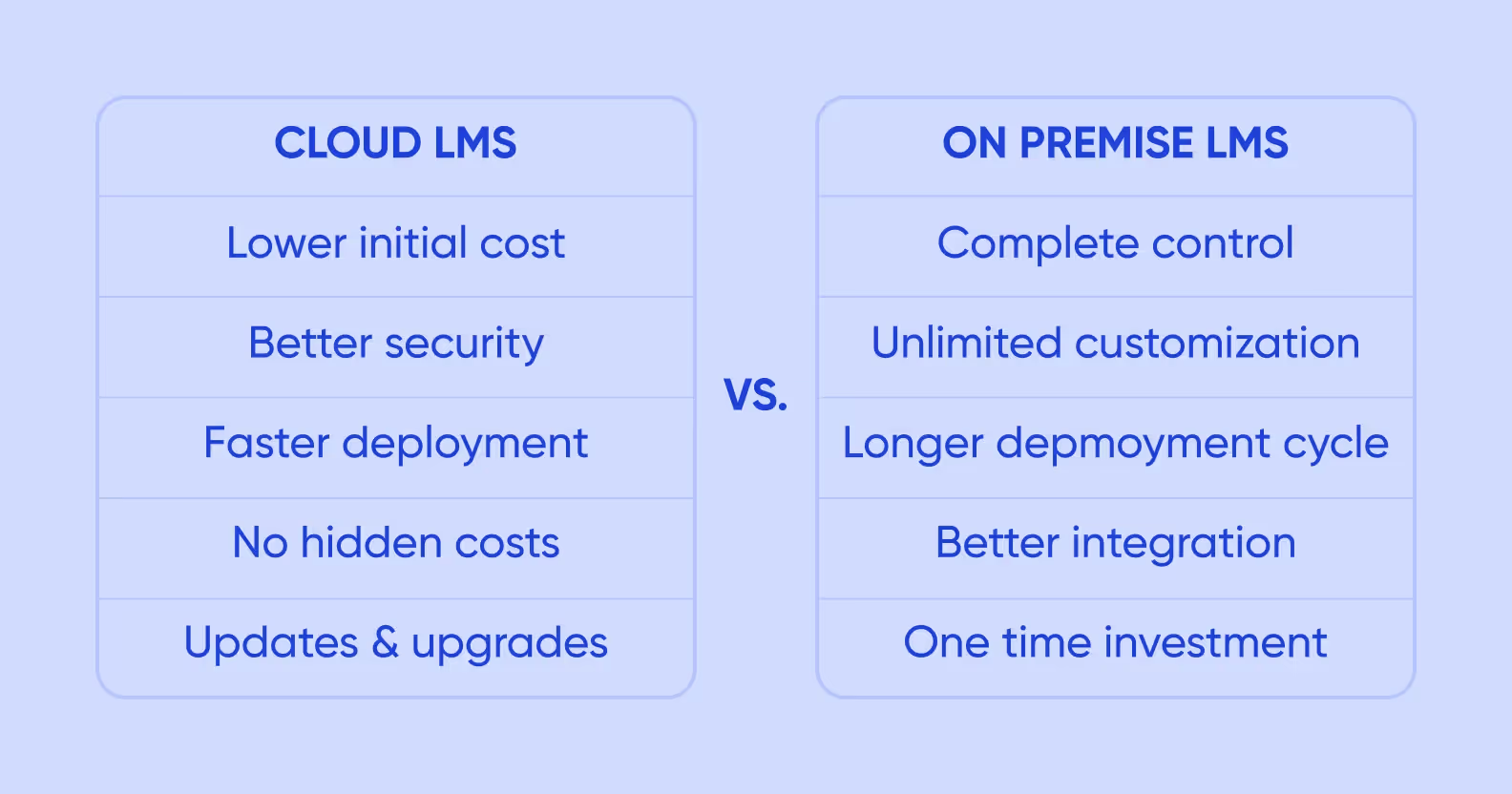
This type doesn’t describe the technical side of things, instead, it means that the purpose of this LMSs is strictly educational. You can deploy the system at educational institutions and online schools. Speaking of their design and features, these LMSs support course management and collaboration between educators and students.
Focusing on mobile devices is something that can be beneficial in 2025. According to Priori Data, an app market intelligence service, more than half of the world population currently owns a smartphone. Making the apps specifically for mobile systems will allow the users to access the system anytime, anywhere. The developers can offer these LMSs as both offline and online options, increasing the overall accessibility even further.
These systems focus on an experience that’s similar to what social networks provide. There are deeper collaborative features that promote knowledge-sharing. They feature chat rooms, discussion forums, and various group projects. These LMSs offer user engagement and versatile gamification features, like badges and leaderboards.
Employee training is one of the most popular purposes of modern learning management systems, so it doesn’t come as a surprise that some of the systems are designed for enterprise learning from the ground up. Corporate LMSs can be very precise in training for certain tasks and can increase the company’s growth and workforce efficiency. Their design allows for deeper integration with other services, for example, the ones that the company’s HR department might use.

These systems tend to be budget-friendly. This still doesn’t mean that they are cheap, although in some cases the licensing fees can get nearly free. They can be customized to suit business needs. The benefits for the end users also include lower prices and privacy, since the tech-savvy customers consider the open-source options safer than the counterparts, due to the ability to inspect the code on their own.
So, why exactly do some learning management systems succeed, while others fail? Although there is no magic bullet that can guarantee an LMS being effective, popular, and profitable, there are certainly things that usually help. Let’s take a look at what you should consider during the earlier stages of learning management system development.
Being user-friendly goes a long way. A smart design makes navigation intuitive, meaning the level of customer engagement will go higher. Also, users will directly interact with content instead of struggling with technological drawbacks. This, in turn, makes an LMS more effective.
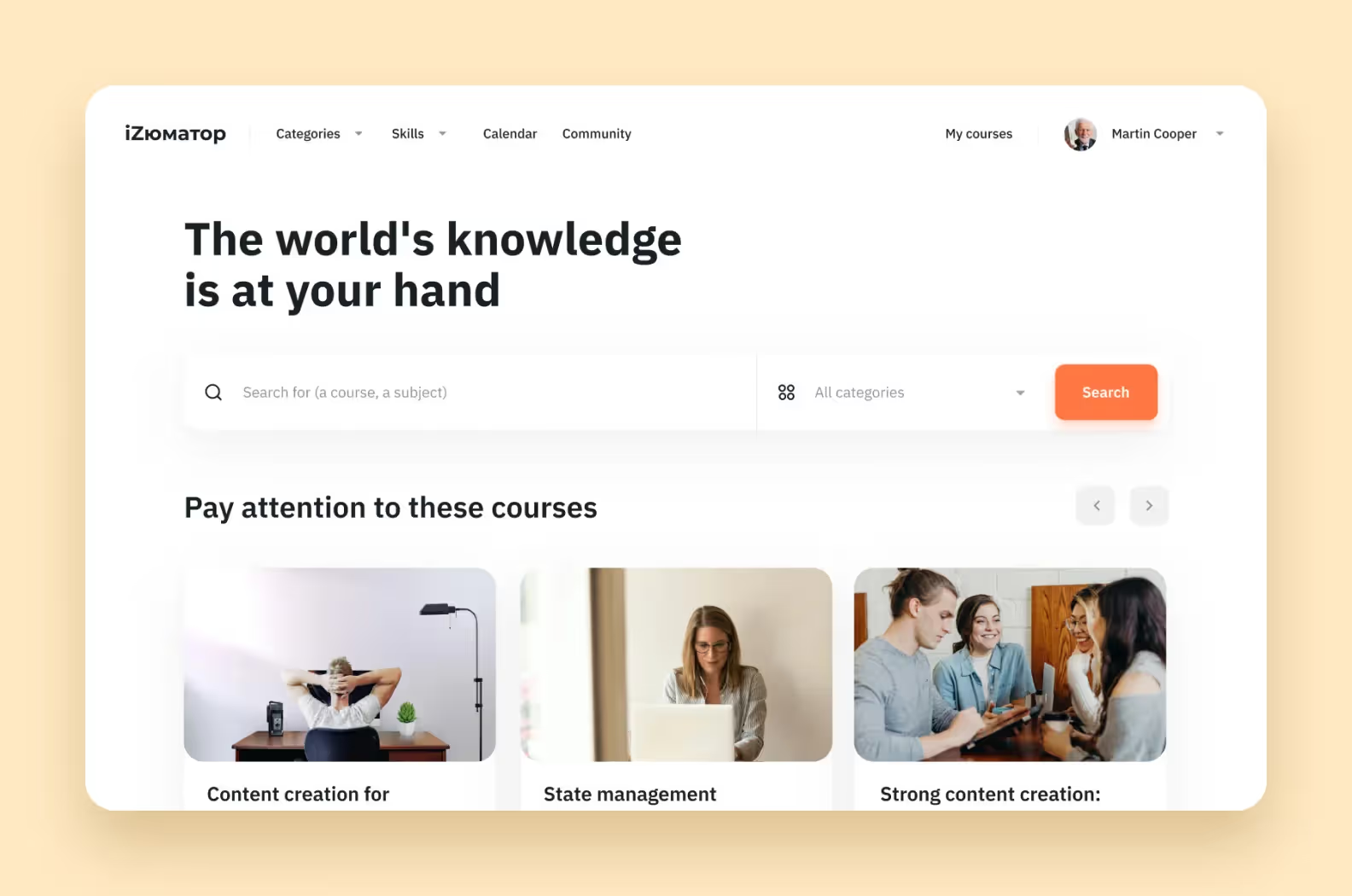
Modern learning management systems are evolving — use up-to-date technologies and capabilities. They become polished, optimized for mobile phones, and responsive. Adaptive learning, deeper personalization features, gamification, and interactivity are just the tip of an iceberg.
During learning management system development, you consider including more technical features like AI, better analytics tools for tracking learner progress and predicting behavior, as well as APIs for integration.
<div class="post_divider"></div>
⭐Our experience. The offline mode can be important
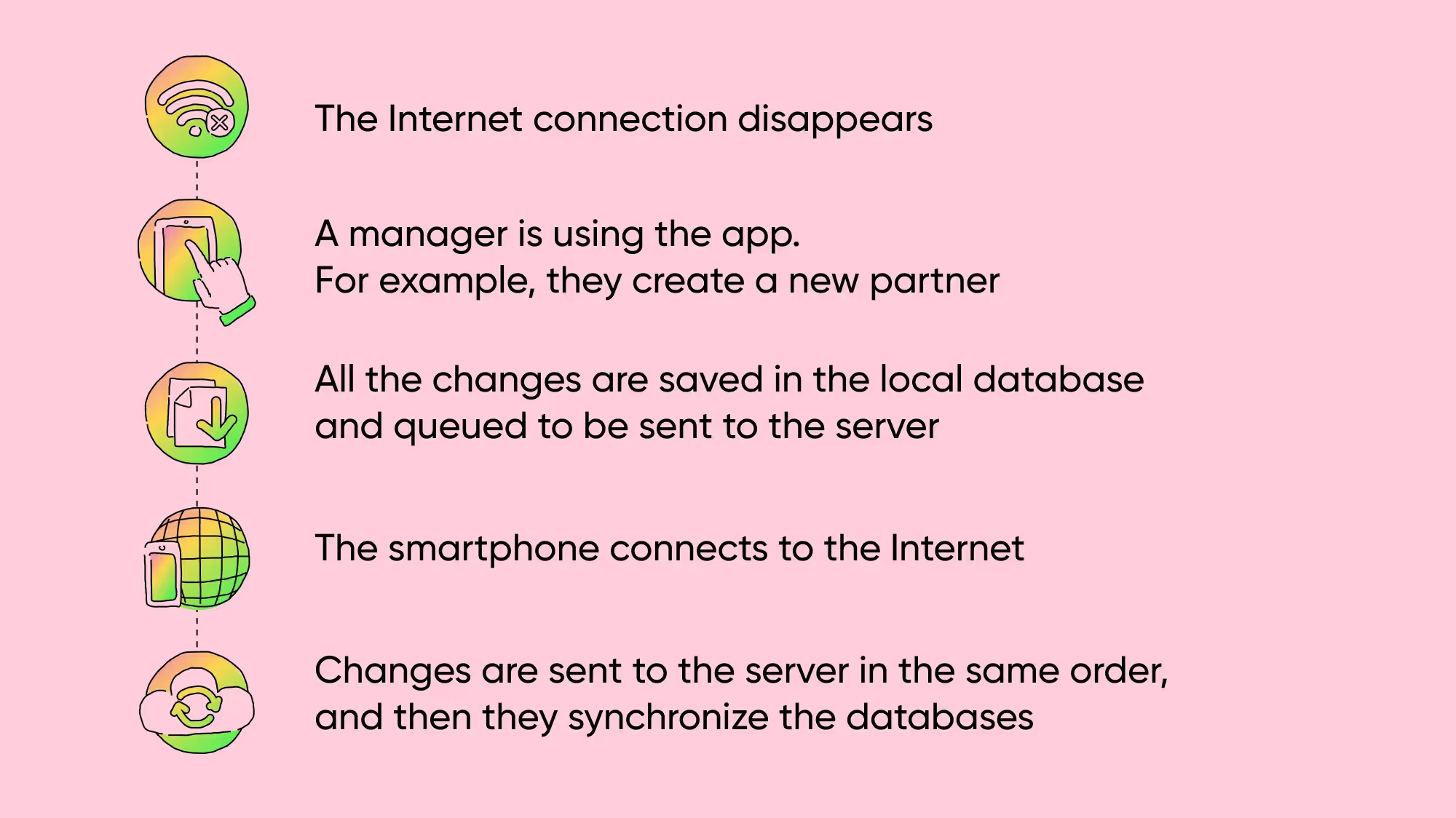
For some situations, the offline capabilities of the app are crucial. When we were developing the CRM for the agricultural machinery manufacturer, we implemented the offline mode, which was useful for the managers working in fields.
<div class="post_divider"></div>
You likely have plans to grow your business even further. And this means that a user base of the LMS will become larger as well. The content demands will also increase with time, and it’s important to make sure your system maintains its performance.
Although it’s a part of the overall UI/UX design, accessibility deserves its own separate mention. People with disabilities enjoy the ability to interact with things and have a complete experience. This also will increase the user engagement and widen the user base even further. There is a guideline by the Web Accessibility Initiative that shows how to make an accessible system.
It is crucial to have software regularly updated. And this also involves having proper feedback channels. Make sure users have ways to communicate with the developers and report potential issues. This includes the quality of content as well as possible bugs that were overlooked during LMS development and software-related issues alike.
The last but not the least crucial aspect is the quality of the content. While it might sound obvious, this is still something that businesses tend to overlook during LMS development. The content should focus precisely on the people that the LMS targets. It should deliver the information in a clear manner.
Now let’s take a look at how the learning management system development unfolds. The process takes 4+ months at minimum, provided you have the resources and a detailed plan. Let’s break down the process of LMS development.
Before learning management system development, there is planning, and planning starts with an idea. Market research is a way to find out if your concept can be successful. This is a complex process that involves steps to find the target audience, analyze potential competition, and figure out the ways to offer something that others couldn’t in your niche.
Create a so-called “learner persona.” It’s similar to a buyer’s persona in its concept: a potential customer of your course. Think of their demographics and knowledge level. Identify their needs, pain points, and what might interest them.
You can also contact the potential users and conduct a survey. Another thing to consider is taking a look at the user reviews for the competition and working from there. We recommend hiring experts to conduct the research and help you with the process before you go fully into learning management system development.
<div class="post_divider"></div>
⭐Our experience. The importance of analysis: how we helped the client save $150,000
Our client planned to develop a super-app for muslims. We recommended conducting a market analysis, since there were doubts that this app would find a user base large enough. After we conducted surveys and did research, the hypothesis proved to be true. The results helped us come up with another idea: develop an app for finding halal products.

<div class="post_divider"></div>
The more users enjoy the interaction, the better it is for everyone — the customers and business alike. Ideally, the app should look nice and polished, no matter the style designers will go for.
The design stage of LMS development starts with mockups and wireframing. Both represent how the app’s screens and windows will look, with wireframes offering some outlines and mockups providing a more detailed visual.
The designers also work on the UX of the app during this stage. If mockups, prototypes, and UX-related functionality prove to be functional and meet the expectations, then the designers add them into the final product. Finally, this stage also involves designing content, including pictures and animations.
During this stage of learning management system development, the programmers work on the software’s backend and frontend, cooperating with designers. Planning, hiring experienced programmers, and maintaining coordination between the departments will help avoid quality problems.
The front-end developers cover the visual side of programming, such as implementing the UI, optimizing the UX, working on the interactive features, as well as on performance and cross-browser compatibility. The back-end side of things includes programming the databases, implementing the server-side logic, and developing the API. It also covers security and privacy capabilities, as well as third-party services integration.
Before launching the service, the project has to go through rigorous testing. This will minimize bugs before deployment. The stages of this process include identifying defects, conducting user acceptance testing, and ensuring integration between frontend and backend components that were designed during the earlier stages of the learning management system development.
At this stage of LMS development, you'll launch the project. This process includes environment setup, data migration, configuring settings, and installing additional services.
This stage covers educating users on how to interact with the learning platform. It involves developing training programs, conducting workshops, and providing support for administrators, instructors, and other people who will interact with the LMS.
Finally, it’s important to keep the project working properly. Regular updates, fixing bugs, adding new features, and listening to the customers ensure that the LMS is active and thriving.
Now you have an idea secured and know what’s important in the world of learning management systems. The next thing to consider is whether you want to develop your own custom learning management system or use what’s already available on the market. Both approaches have their own pros and cons. Let’s list them.
Using an existing solution is effective, particularly in terms of speed and stability, and it can also save money. However, this option has its drawbacks, most notably vendor lock-in, potential issues with deeper integration, and a lack of control, which may be a significant concern for some organizations.
As you can see, despite higher initial costs and longer time to develop and launch, using a custom learning management system allows you to have control over the project, data, and integration. Moreover, you can tailor the features to meet unique needs.
There exist various libraries and frameworks that you can use for LMS development. For the front-end side of things, the tools include React.js and Vue.js. Both of them are based on the JavaScript programming language.
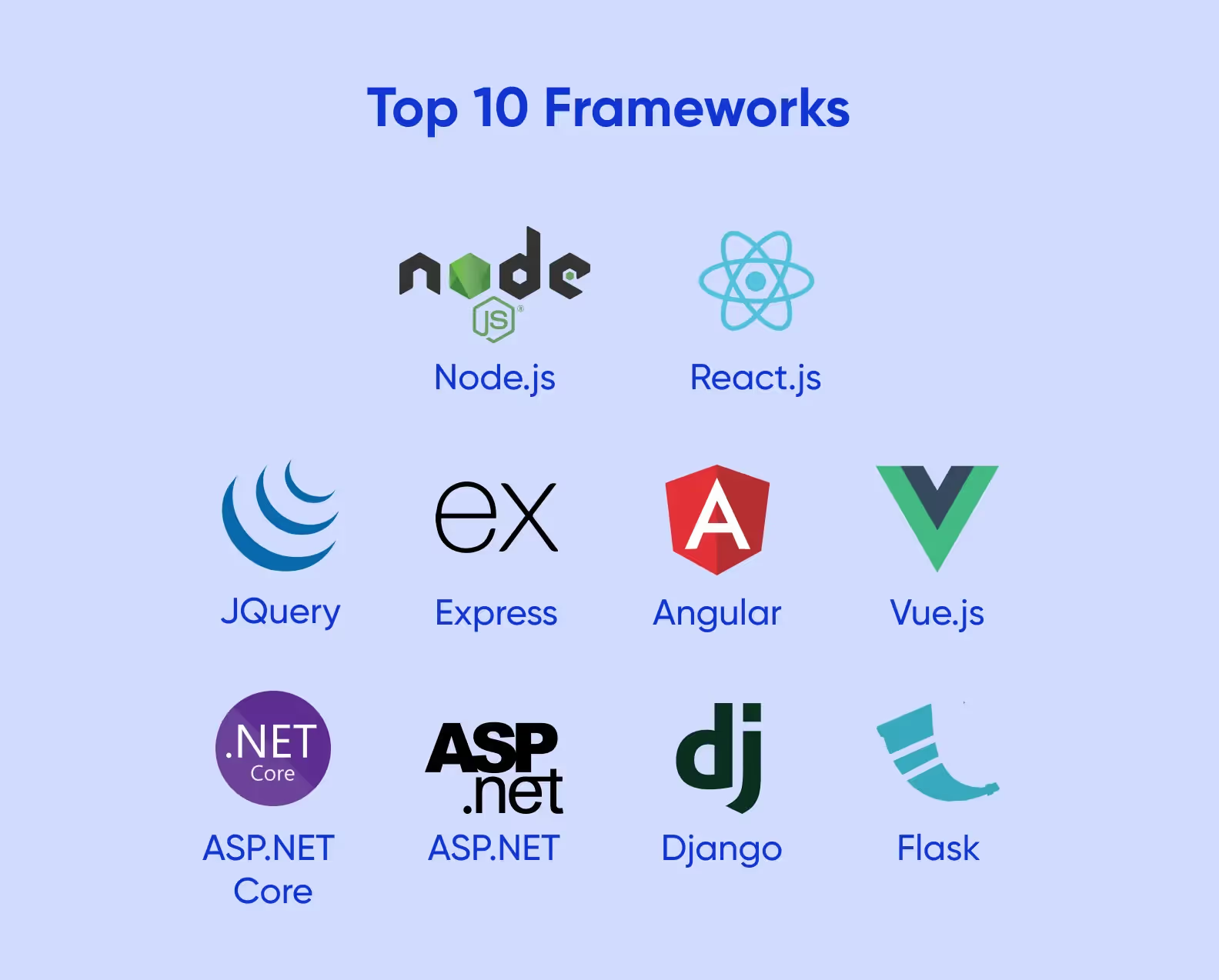
There are also responsive design frameworks such as Bootstrap and Foundation that can play a role in learning management system development, especially its UI/UX design stage. For content delivery purposes, you can use some of the available content delivery networks (CDNs) — Cloudflare and AWS CloudFront.For the backend side of things, you can use frameworks such as Express.js and Django, with the former using JavaScript as its backbone and the latter — Python. Database options include MySQL, PostgreSQL, and MongoDB.
<div class="post_divider"></div>
⭐Our experience. Using Next.js instead of React.js for the front-end side of things for better integration
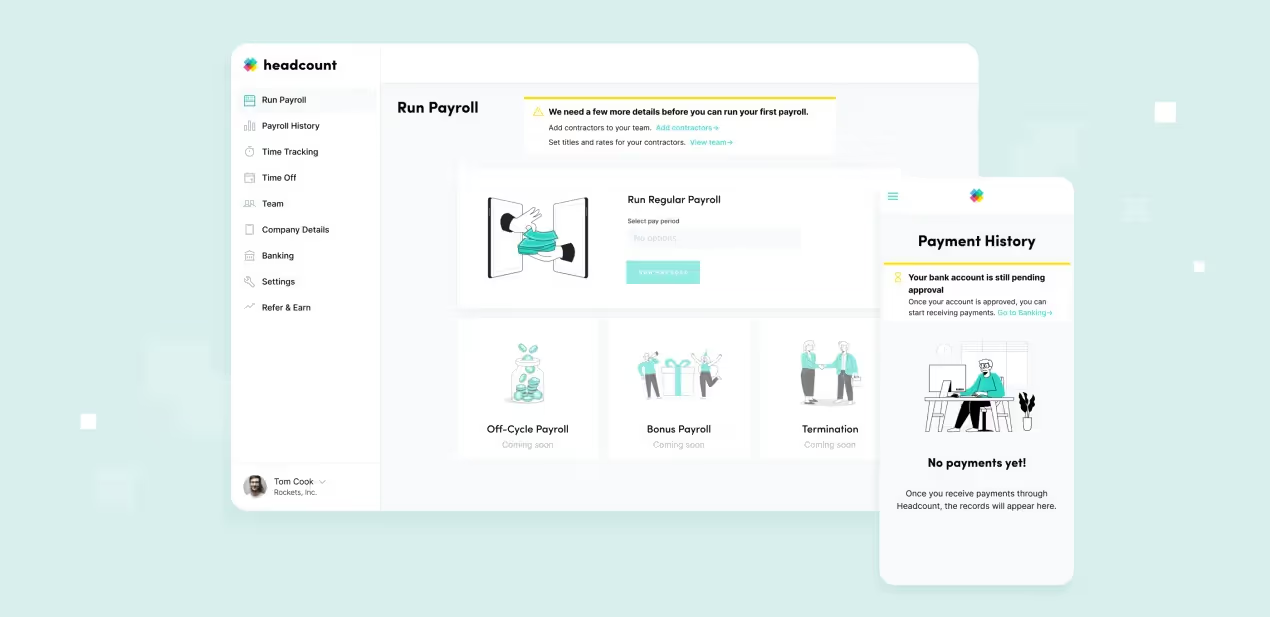
While working on the Headcount project, we planned to use React.js for the front end to achieve the results faster due to our familiarity with the tool. However, integration with other services was important, and the customer asked us to use Next.js — the framework that his main project, Jumpstart, was using. Using the same backbone for two different services makes it convenient to use software, as users and the business are familiar with it.
<div class="post_divider"></div>
As we have already mentioned, the process of learning management system development can take 4,5+ months. The prices range, depending on factors:
Below, we’ll break down what you can expect price-wise in 2025.
On the low end, you can expect to pay $78,000 with at least $10,000 yearly spending on maintenance. The higher end of learning management system development costs can easily reach $336,000 with $50,000 yearly spendings on support.
Of course, there are potential issues and risks that you should be aware of and learn how to overcome during LMS development. After all, there are many ways to learn from the mistakes made by those who have already developed LMS projects.
LMS development is rarely cheap, and even going the most affordable route — using the open-source technologies and ready-made solutions — still will involve a sizable amount of money. And even if everything seems to line up perfectly, things can always go not the planned way, especially if you don’t have a lot of experience with LMSs.
Usually, planning is an effective way to prevent things from getting even more expensive than expected. Regular financial reviews also help saving money on the learning management system development.
Not meeting the deadlines is also a common problem. How to fix it? The obvious answer would be setting realistic ones in the first place. Ideally, this should be the normal practice right from the start of the project. Regular checkups are also a must. And, of course, you should have some additional time reserved in case something unexpected happens.
Your LMS looks perfect from the technical perspective, yet it lacks the popularity you want it to achieve. In this scenario, the problem lies in user engagement. Or, to be precise, a lack of it. Thankfully, there are ways to make customers more interested in interacting with your learning platform.
If you have just started and are currently at the market research stage of the LMS development process, then we recommend taking a closer look at the popular trends in the LMS world. If your system is already deployed and in use, then the obvious path would be to work on the feedback channels and the quality of content. After all, the customers know best and can always provide some information about what’s lacking.
The market might seem saturated, but there’s still opportunity to create a competitive learning management system. You can choose between custom learning management system development and using ready-made options. You can also go with open-source technologies or select proprietary offers.
The costs of LMS development range, but even the higher-end ones are still reasonable. Obviously, developing a custom learning management system will get more expensive compared to using existing offers, but the level of control over data, integration, and scalability is worth it.
Certain risks are also present with learning management system development, such as budget overruns and not meeting the deadlines, but you can avoid them with better planning.
➡️ Have an idea for a learning management system? Let's discuss it! <a class="blog-modal_opener">Fill out the form</a> to receive a free project estimate within 48 hours.